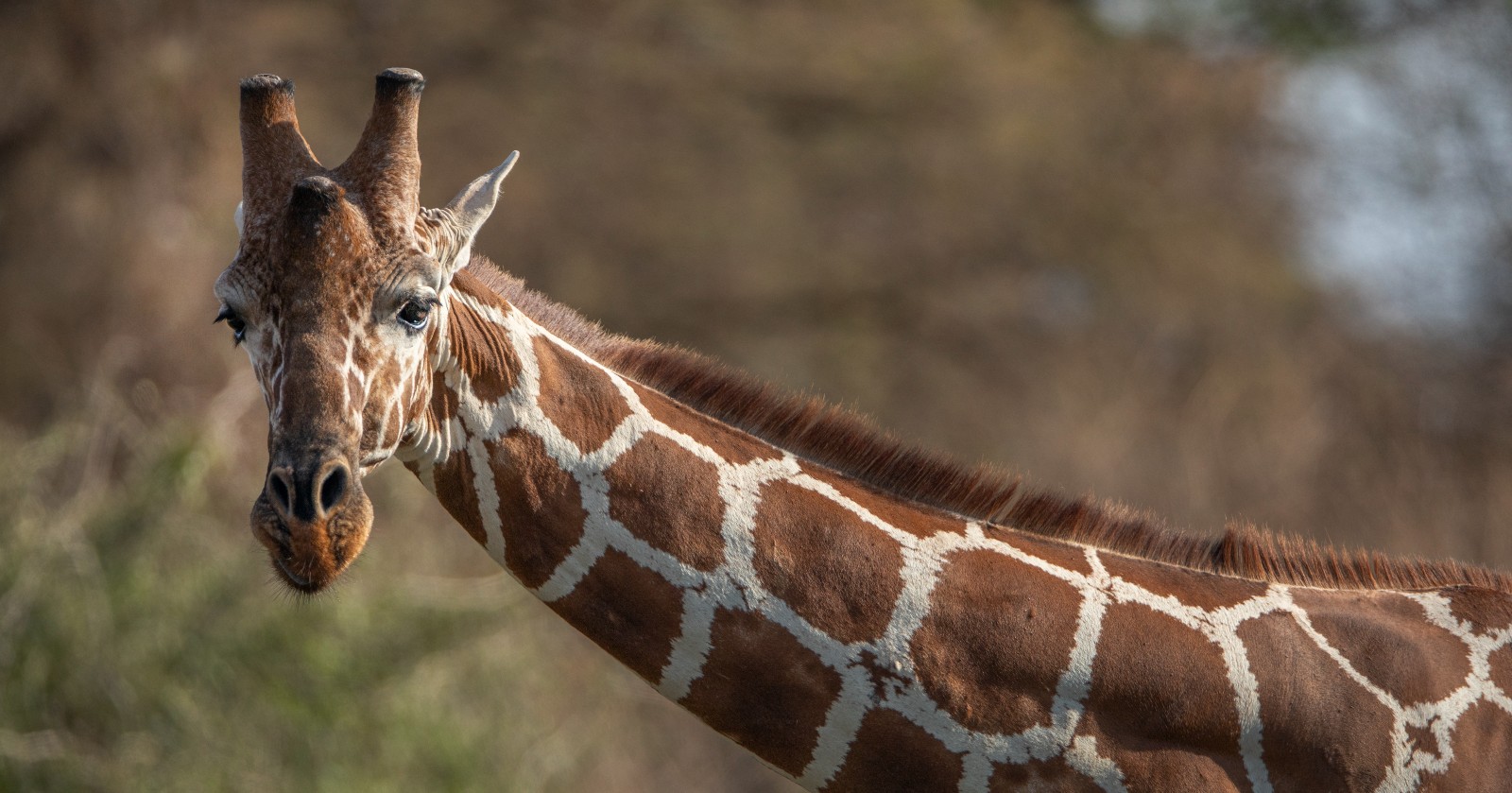High and mighty giraffes
2 December 2021
HIGH AND MIGHTY GIRAFFES
Fun facts about the world’s tallest mammal.
Universally recognisable for their distinctive looks, giraffes also have a vital ecological role to play. These vast vegetarians spend their days feasting on acacia trees, opening up the habitat and allowing new plants and vegetation to flourish on the ground below, then dispersing the seeds to stem the tide of desertification.
They also possess the world’s longest legs, measuring around 6ft in height – taller than many humans! In fact, there are many surprising and unique facts about giraffes…
- Giraffes only need to drink once every few days, which is just as well because their necks are too short to reach the ground! Most of a giraffe’s water intake comes from the plants they eat, but when they do need to drink, they have to spread their front legs or kneel to reach water pools
- Despite their somewhat ungainly appearance, giraffes can sprint at speed of up to 50-60kmph! That’s slightly less than a tiger’s top speed, but just half that of a cheetah. Over long distances, they tend to take things at a more leisurely pace of around 10mph.
- Giraffes spend the majority of their lives on their feet, with females even giving birth standing up. After a 15-month gestation period, calves are able to stand up and walk around just an hour after being born.
- Both male and female giraffes have horns called ossicones, which are different to many superficially similar animal horns, as they are actually part of their skulls and covered in skin and hair. Males can use their ossicones to fight, and they can become bald on top due to frequent altercations with other males.
- Giraffes have a 25-year lifespan and live in unstable herds that might consist of males and females of any age, whilst older males live in bachelor herds. Long-term associations do exist, seemingly depending on factors like family relationships, sex, and age.
Sadly, giraffe numbers have plummeted by a staggering 40% in the last three decades. Habitat loss through expanding agriculture, human-wildlife conflict, civil unrest, and poaching for their meat, pelts, and tails, are among the reasons for the decline.
In Meru Conservation Area, our charity’s heartland, and home to nearly 10% of the entire population of reticulated giraffes, we are working to monitor, study and protect this fascinating species. We can identify individual families and mitigate the threats they face. We can work with local communities to increase awareness and resolve possible conflicts.
We can train a local Twiga Team to patrol Meru and remove snares. We can protect the savannah habitat and revive degraded areas.
Please support our Save Africa’s Giants appeal today, to help protect this fascinating species for generations to come.
Image © www.georgelogan.co.uk

